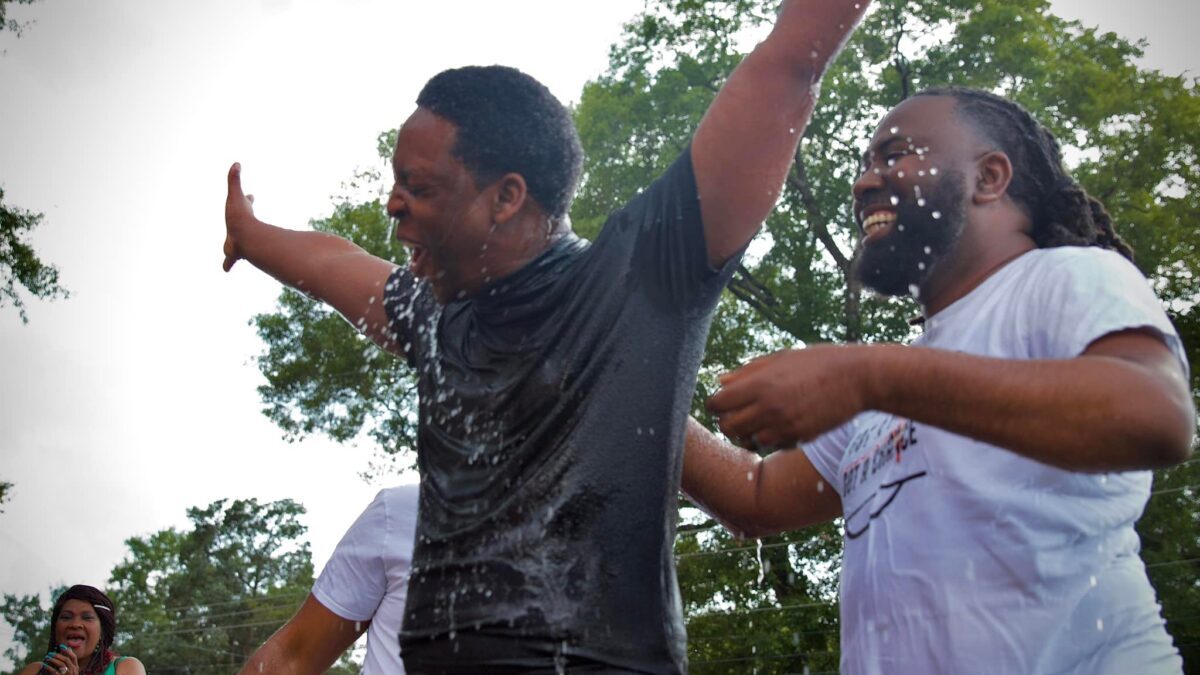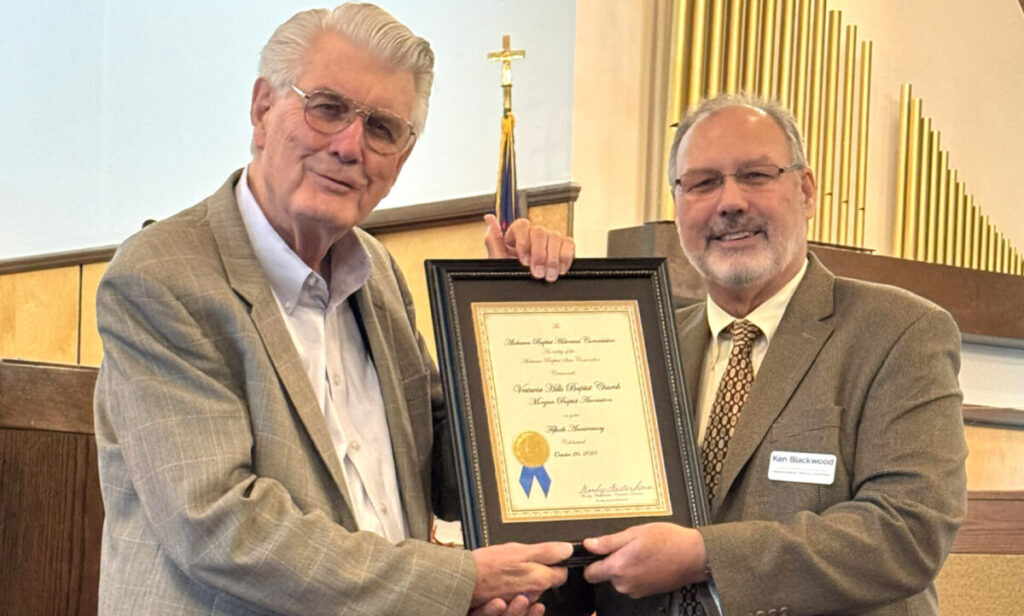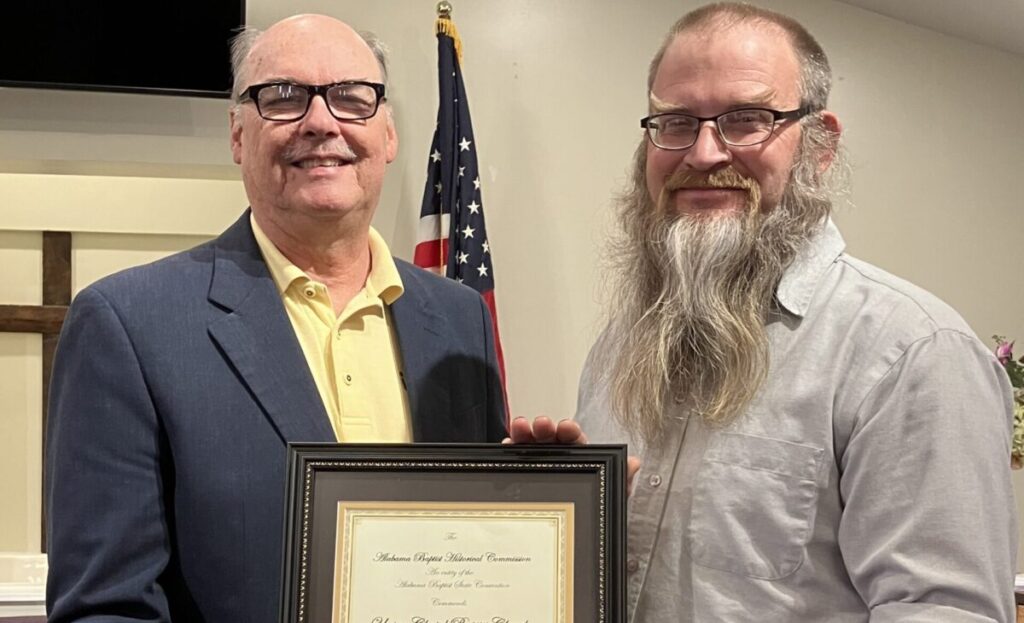In 2018, Lamar Duke pulled together a report he’d been asked to compile, and when he finished it, he sat at his desk and wept.
The numbers showed that in the five years prior, Alabama Baptists had planted 85 churches, representing 785 people who had been baptized.
Those churches were “reaching the unchurched,” said Duke, then-church planting strategist for the Alabama Baptist State Board of Missions. “I tell people all over Alabama that if we have one church that can baptize 30 a year for the next five years, that’s significant. But if that church can also plant churches that do the same thing, how many more people will come to know Jesus that way?”
Finding the answer to that question was the goal for Duke, who died in 2020 after a battle with cancer, and it remains the goal for Rick Barnhart, who directs the SBOM office that includes church planting work.
“If we’re going to reach Alabama, we’re falling behind,” Barnhart said, noting that the state needs many more churches just to keep up with the population growth. “We have to plant new churches if we’re really going to make a difference here.”
Brian Harper, who now serves in the role Duke served in, said that’s been the vision behind the state’s church planting effort, which has grown more vibrant in recent history.
In the past decade, Alabama Baptists have planted more than 100 churches and continue training new church planters through cohorts and residency programs.
‘God is working’
They’re also helping with a collegiate church planting network that’s planting churches near campuses across the state.

“We’re seeing a lot of response. God is working in the details,” Harper said. “From Alex City all the way to Phenix City and all across the state, God is calling people to start churches.”
The idea of starting new churches is not a new concept for Alabama Baptists. When the first Baptists moved into the state around the turn of the 19th century, they started from scratch planting new churches.
Decades later, in the mid-20th century, many established congregations planted new churches as population growth began expanding into the suburbs.
From there, the planting trend declined somewhat, but the SBOM continued to work toward finding the best way to facilitate new church starts. In the early 2000s, when Barnhart was a planter, he said he remembers the SBOM being “very willing” to come alongside church planters, buying properties and mobile units for them to meet in.
But at that time, “there was no training,” he said. “It just wasn’t out there yet.”
Over time, the SBOM’s help grew to include more resources, like financial assistance for new congregations. When Barnhart left the pastorate and came over to the SBOM side of things in 2012, he wanted to take the effort to the next level.
Strong support
“I knew what needed to be done because I had been a planter, but I didn’t know how we needed to go about doing it,” he said.
Around that time, he crossed paths with Duke and, after some prayer and conversations, brought him on staff.
“Lamar brought us from doing OK to really becoming one of the premier states in church planting and introduced Church Planting Journey, which was all that was available to us at that point,” Barnhart said.
Today, the SBOM helps by walking potential planters through a robust preparation process. First, they make sure the planter is well connected with a sponsor church and with their local Baptist association.
Vital connection
Rick Lance, SBOM executive director, said that connection is vital.
“Our new church plants enjoy a healthy longevity and viability rate because we are purposely working with local churches and through the local associations,” he said. “This collaborative strategy has been most effective. We are all partnering together to advance the Kingdom.”
From there, planters are assessed by SBOM staff through a North American Mission Board portal to find out more about their leadership potential and experience. Then they move through an 11-week training cohort that meets online and is conducted in both English and Spanish.
Harper said this setup has given them a lot of flexibility — for instance, when the next cohort meets in August, one planter-in-training will be going through the coursework from Honduras before moving to the United States.
And after the cohort is over, planters are assigned coaches who meet with them monthly.
They also receive financial assistance from the SBOM to cover things like rent for facilities, AV equipment for the church and health insurance for the planter.
“All in all, we’re investing about $100,000 in each plant,” Harper said. “We’re trying to be good stewards.”
He said in the same way that the state has some areas that are “food deserts” — places with limited access to affordable and nutritious food — it also has some areas that are “gospel deserts,” or places where people aren’t easily hearing the gospel in a way they can understand and connect with.
Because of that reality, many existing churches around Alabama are getting involved with church planting in order to make the gospel accessible to every person who calls the state home.
‘A lot more to do’
“We have a lot more to do (and) if every church in Alabama would think about church planting, that would help us take some steps in that direction,” Harper said. “If we look at the world outside of those who would go to our church, it moves us to be obedient to do missions in our communities. If we don’t, we miss the opportunity of making disciples and growing disciples.”
What are some ways established churches can step up to help?

One of the most common ways is to partner financially, Harper said. Church planters need financial support and so do church replanters, or those helping a declining church get a fresh start.
Another way to partner is for legacy churches to offer their facilities either by sharing them with a new church plant or gifting them to the new congregation.
In 2018, Chisholm Baptist, an aging church, opened its doors to Flatline Church at Chisholm, a plant that’s now thriving inside its walls.
The two were connected by Neal Hughes, director of missions for Montgomery Baptist Association, and the SBOM supported them through the process.
Continuing legacy
A detail not lost on Hughes is that the churches’ building is within a two-minute walk of Old Elam Baptist Church, a congregation planted in the 1800s by Caesar Blackwell, a prolific African American church planter serving in the days when Alabama had no churches.
“He was used by God in a great way in the frontier days of Alabama Baptists and the Alabama Baptist Association, the front runner of Montgomery Baptist Association,” Hughes said.
“He was the first Montgomery Baptist Association church planting strategist, serving the River Region in the 1830s and 1840s.”
Before Blackwell’s death in 1845 — the same year the Southern Baptist Convention was founded — he planted at least seven churches.
“We owe him a great debt of gratitude,” Hughes said, noting that Blackwell’s work lives on.
Within five miles of Old Elam are legacy congregations that were planted in the 20th century — churches like Chisholm, Highland Gardens, Yarbrough Street and Open Acres Baptist, all of which had some seed lineage to Caesar Blackwell’s 19th century faithfulness as a church planter, Hughes said.
Now in that same area has come the next generation of church plants, like Flatline, he said. “The legacy continues.”
Barnhart said that’s the hope as he, Harper and others steward this ministry through the 21st century.
Church planting has been a journey for Alabama Baptists, he said, “and we’re not finished with the journey.”
For more information, visit plantalabama.org.






Share with others: